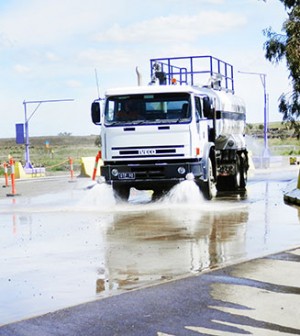CMPA Submission on proposed changes to air particle legislation.

Summary of the CMPA submission to the National Environment Protection Council on: Proposed variation to the National Environment Protection (Ambient Air Quality) Measure in relation to the standards for particles.
Appropriate standards
The CMPA fully supports clear unambiguous standards that protect both the health of our workforce and the communities that surround our operations. As such, we support any review that has, as its aim, these objectives.
However, we recognise that, in relation to fine particles, no definitive criteria (i.e. measured in µg/m3 over 1 hour, 24 hours, 1 month, 1 year, 1 lifespan) exists that will provide total protection for all. By default, any specified standard needs to be a compromise between health and environmental outcomes, the economic considerations of industries impacted, and even anthropogenic realities.
In particular, it is recognised the existing standard is a compromise between environmental and economic considerations and any reduction will simply be an exaggerated outcome of that which presently exists; the standard specified for fine particles may not be a proven safe threshold, simply a standard that society accepts as fair and reasonable.
CMPA Concerns
- The financial impact on our industry (primarily small to medium sized quarries) has not been satisfactory quantified in the proposal to reduce the standard.
Considering that the environmental and economic considerations on an appropriate fine particle standard are interconnected, we remain concerned that NEPC has not undertaken an industry impact assessment of the proposed reduced criteria within the small to medium extractive industries sector. - Combined sources warrant considerations in Regulation
Fine particle standards represent total ambient conditions, of which our member quarry sites contribute within a number of rural areas. Our member’s sites can be located in an industry cluster, where 2, 3 or more dust producing facilities are operated. Planning scheme zoning often forces the co-existence of similar activities into the same area. - Compliance monitoring needs to be simplified
Monitoring for fine particles is an expensive and technically challenging process. If conducted in accordance with Australian Standard requirements it requires high volume samplers that in the main require a 240V power supply. Remote operation is a difficult process that requires considerable resources to operate, analyse and interpret. Background equipment is often warranted, running at the same time as a compliance monitor.
Depending upon a small to medium sized quarry’s specific regulatory conditions, compliance monitoring can represent a significant and unjustifiable financial burden exceeding any test for ‘reasonableness’.
The concern our Association holds is not whether our quarries can implement best practice measures to control dust, but whether following best practice control implementation, conformance against the reduced standard proposed under NEPM can realistically be achieved.
Recommendations
The crux of our submission therefore centres on the ability of CMPA members to demonstrate compliance and in particular:
- Any reduction in fine particle standard needs to clearly consider the economic impact on extractive and material handling industries as the standard must represent a balance between environmental and economic considerations.
In particular, NEPC conducts an economic impact statement (EIS) of any reduced standards effect on the extractive industries sector including medium to large sized quarries (10,000 tonne/ annum – and above). - Should standards be reduced, NEPC work with all State Regulators to specify a realistic and cost effective means to monitor against the standard using cost effective techniques as opposed to expensive, resource intensive high volume sampling techniques units currently specified in the Australian Standard, or reliance on models that require extensive meteorological data sets, which require a series of assumptions and have intrinsic accuracy variations. This would provide cost effective real time information to better manage off-site discharges.
- Should the standard be reduced, guidance be specified as to how assessments are to be made and conformance requirements met where it is established multiple sources and multiple sites contribute to fine background particle levels.
- Should the standard be reduced, there needs to be a transition period for inclusion into State Policy so that industry (especially the extractive industries) can evaluate and contribute to an appropriate regulatory regime. We suggest specifying a five year period would be appropriate.










You must be logged in to post a comment Login